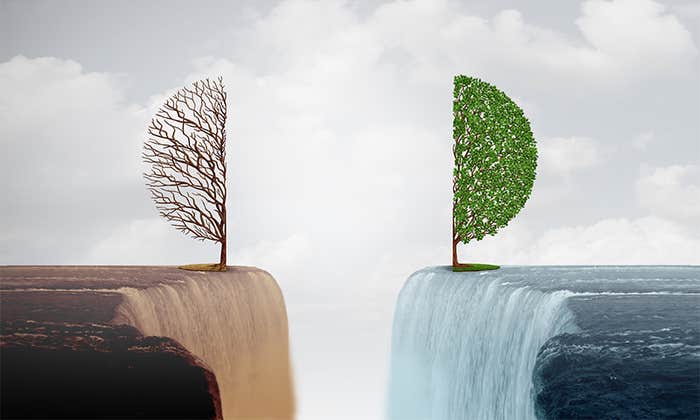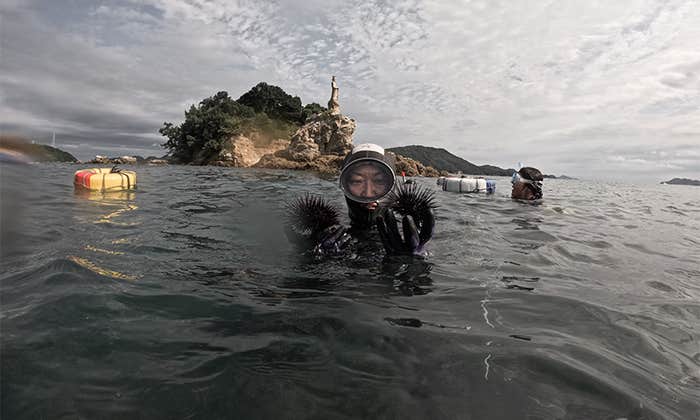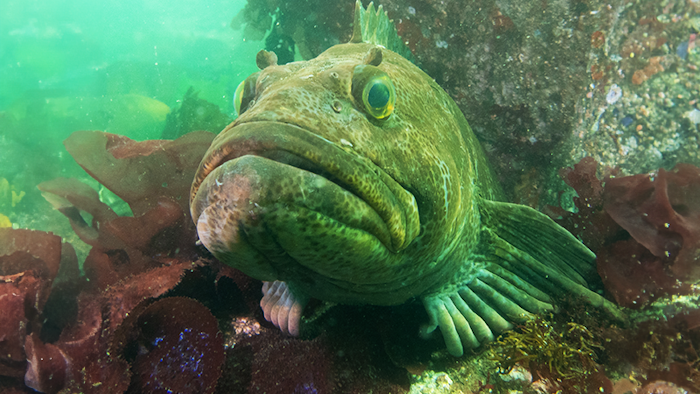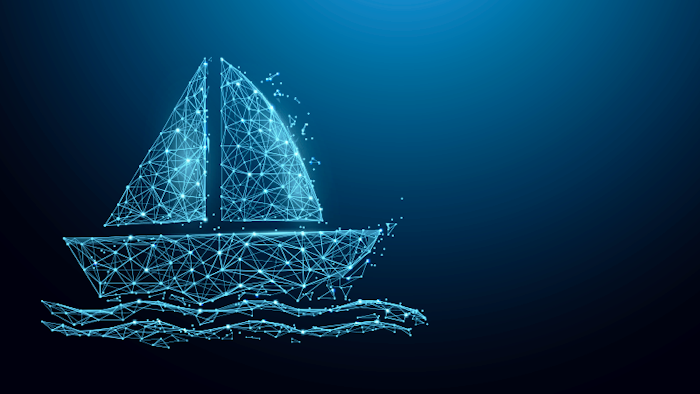It’s a Faustian bargain for the Anthropocene: The greatest source of rare-earth metals are to be found at the bottom of the sea—and so are Earth’s most fragile ecosystems, an undisturbed and largely unexplored world of marvels.
The metals are required for the batteries that could power the clean energy revolution so desperately needed to avert the worst consequences of fossil fuel pollution-induced climate change, not to mention meet consumer demand for electronics. Yet mining them will have devastating consequences.
In an ideal world, mining would proceed slowly, with great caution, attentive to the creatures sacrificed for our appetites and to as-yet-unstudied consequences for Earth’s biogeochemical cycles. But the world is not ideal, and plans for deep-sea mining have proceeded at breakneck pace, with nearly 600,000 square miles of exploration permits granted by the International Seabed Authority and commercial mining expected to begin within the next several years.
We have a responsibility to life on the planet and to the diversity of the planet.
Humanity’s demand for metals—and the profits that will accrue from mining them—is on a collision course with deep-sea life. It appears that devastation is imminent—unless, argues Lewis Pinault, we mine the moon instead. “We have this gift of our geological twin, the moon, to provide us with mineral and energy wealth,” says Pinault. The trick is figuring out how.
Trained as an MIT engineer and NASA geophysicist, with an international law degree to boot, Pinault is a partner at Airbus Ventures, an early-stage venture capital firm focused on planetary challenges. Though moon mining may seem impossibly difficult at first glance, Pinault sees it as an engineering challenge no more daunting than mining the ocean floor, and certainly far less destructive. “Once we’ve done the hard work of knowing where to mine,” he says, “the next steps are solvable.”
Nautilus talked to Pinault about his extraordinary vision.

In an op-ed published earlier this year you described the International Seabed Authority (ISA) as successful. I’ve encountered many people who have a different opinion of the ISA. To them, it’s like a faulty brake on a runaway train.
The fact that it exists is, to me, kind of a success story in its own right. The Law of the Sea treaty that gave birth to the ISA has a very long and contentious history, and I love that it is what it is: a piece of commons law embodying the belief that there are areas of the planet beyond any notion of national boundary, a treaty created to protect shared and common resources that are both precious and subject to harm, a recognition that we need some way to figure out our relationship with them.
If we go back to President Johnson’s administration, during the height of Great Society thinking, he was genuinely bothered by growing inequities in the world. He thought that the developing world needed a better deal out of capitalism, because the end game of capitalism didn’t seem like it was going to be able to distribute any wealth to them.
With the discovery of abundant, widespread deep-sea manganese nodules 5,000 meters down, there was a sense of immense wealth that could be shared with everyone. And so a lot of the Law of the Sea development in the 1960s and into the 1970s was around a regime for profit-sharing from this kind of windfall. At its height, when the ISA was established, it was modeled on the oil and gas industry’s licenses for exploration—except the license fees would immediately start being distributed to different countries, and the profits would almost entirely be redistributed around the world. So the International Seabed Authority was constructed with generous and amazing intentions.
Much of the wealth distribution elements have been effectively torn out of it, but the United Nations and its authority is remarkably the go-to place for would-be explorers today. They still have the power to grant the licenses. They still have the power to do environmental impact studies and they are required to finance environmental researchers in those countries. That’s a pale trace of what the ISA was meant to be—but it’s still something that can be worked with.
Scientists and conservationists say that deep-sea mining needs to proceed slowly, with great caution, because we know so little about the ecosystems that would be impacted—that is, destroyed—and how those changes would ripple out into Earth’s systems. Mining companies, along with their investors and the nations they partner with, want to go fast. And it seems like they’re winning.
The already-enormous demand for minerals will only grow; the ISA has granted exploration licenses to vast areas of the ocean floor, and companies are pushing to start commercial operations immediately. In fact The New York Times just published an investigation into how the ISA appears to have given unfairly preferential access to a company that intends to start industrial-scale seabed mining by 2024. What do you see happening in the next few years?
It’s happening fast. There was supposed to have been a cycle of exploration licenses, which are paid for and generate monies that go into environmental impact studies, which are then actually professionally conducted and assessed by multidisciplinary teams and subject to public review. It’s not supposed to be a path toward payment of corrupt dollars to a vulnerable nation-state saying, “By the way, here’s your money. And we trust you to fully use it on environmental impact assessment”—but with the substantial risk it more likely goes into somebody’s pocket.
They’re supposed to actually present the environmental study before the exploration license is turned into permission to harvest. So per the New York Times’ investigation, it seems something is broken, potentially tragically. Not just for the oceans, but because we may be missing an important analogue and opportunity to design a properly working system for mining the moon.
Even if the process is run properly, though, it just feels like—barring some unforeseen surge in concern for ecosystems that almost nobody will ever see, that we’re connected to through only by screens and consisting mostly of funny-looking invertebrates—that seabed mining is going to happen sooner or later.
And I say that as someone who loves funny-looking invertebrates, but people already accept the destruction every day of terrestrial ecosystems that are teeming with charismatic animals and more immediately connected to human well-being than the deep ocean seems to be.
Maybe this has the makings of an unlikely alliance—although, at least in my head, not so unlikely—between people who are ready to protect new species, unseen and uncatalogued and unknown, through the right application of precautionary principle, and people who like extractive industries. It’s in the interest of people who like the idea of moon mining—like I do, mining in space that is ultimately to the benefit of Earth and its biosphere—to put a hold on ocean mining. Because that will change the economics.
The moon is a particular puzzle because it’s fractal. You just get craters and more craters.
I think there is room for a movement, if you will, to say, “Look, we have a responsibility to life on the planet and to the diversity of the planet. And we have this gift of our geological twin, the moon, to provide us with mineral and energy wealth.” It’s going to be hard, expensive work; you have to get there, you have to warm the lunar soil, you have to extract and beneficiate the minerals, you have to do a lot of remote or highly-automated operations. But the technology is heading in that direction.
Fast-advancing artificial intelligence and guidance systems give us confidence that a not-too-human-intensive mining operation can practically return lots of mineral material—and potentially an abundance of clean energy—to Earth.
But if seabed mining is established on a meaningful scale in the near future, wouldn’t that preclude the development of a more-expensive, more-technically-challenging moon mining industry?
I think there can still be a path forward. I would grab whatever seabed mining is happening as an opportunity for analysis. How well is it working? What are the difficulties? Where are you smelting? Where are you refining the minerals that you get? What does that cost? In projects I was involved in, in the 1980s, this actually stopped much of any idea of mining offshore Hawai`ian waters, because you had to put a smelter nearby and do the environmental impact study and no island in Hawai`i was ready to accept one.
I would say, “Look, here’s the data. You want to get this much cobalt. You want to get these rare earth metals. This is what it takes. This is what it costs.” I would underscore the unaccounted-for impacts and say, “Well, getting the same things from the moon is not 1,000 times more expensive. It’s (say) 10 times.” Then, to me, it becomes a debate.
How sustainable is seabed mining? Are you going to do this all over? If you start changing life patterns in ecosystems, those impacts are going to propagate in ways that we don’t understand. So I think if we’re in the zone of it being 10 times more expensive to go to the moon, maybe we could leverage data about seabed mining.
Let’s say the future rolls out like that. Seabed mining is too destructive, people want an alternative, and mining the moon is an alluring possibility. What are the challenges to making it a reality?
I’ll start with the technical. To develop scalable mining on the moon’s surface, you want to start as close as possible to exactly the right place so that you’re not mining someplace with poor concentrations of a particular mineral. This is the same thing we would do on Earth. We would do a mineral assay to estimate the potential quality and lifetime of a mine. But it’s not very practical to do what we would do here, which is to send field geologists and drilling equipment and drive around in well-instrumented trucks.
That means, to the extent possible, doing remote sensing, and by remote sensing I mean orbital data-gathering. But even in my own work—I work with Lunar Reconnaissance Orbiter images, from an onboard stereo camera that’s been continually photographing the moon since 2009—it’s hard to know what it’s looking at at any given time. There is no standard coordinate system. And the moon is a particular puzzle because it’s fractal. If you showed me a picture taken 50 meters from the surface and 5 meters from the surface and 5,000 meters from the surface, I would have trouble telling you—unless I recognized a feature—what is what. You just get craters and craters and more craters. There’s micrometeorite impacts that the human eye can’t see, up to vast craters that we can see with our eyes from Earth. It all looks the same.
We have this gift of our geological twin, the moon, to provide us with mineral and energy wealth.
And we don’t have a fleet of communication satellites orbiting the moon, much less GPS systems, so even if you have the data, you don’t have a way to bring it to any other place. So firstly you need some kind of a reliable communications system. At Airbus Ventures we’ve invested in companies like ispace, which has won a contract with NASA to help deploy and run two communications satellites in conjunction with a lander on the moon’s far side.
Then we need a much more detailed mineral map of the moon. That might come through refinements of work that began 20 years ago, but that might be better achieved using quantum sensing. We invested in Q-CTRL in Australia partly because their quantum sensors are good for Earth, measuring ocean wave heights and movements and underground aquifer surfaces—but you can also use them to learn a lot about which minerals might be where, at high resolution. So orbiting quantum sensors is a great start, and then there’s nothing like taking samples. The Chinese space program recently achieved just that, from a mineralogically promising high-latitude area on the lunar near side, the first such mission in nearly 50 years. They got a rover, disturbed the surface, dug a hole, then stuck it in a canister and blew it back to Earth and are analyzing it. That’s the kind of thing I expect we can be doing a lot more of, and with the right equipment, in situ.
Compare this with the oceans, where we have a pretty good idea of where the seabed minerals are, but the next step—the extraction, the smelting, the processing—is where it gets hard. What excites me about the moon is that once we’ve done the hard work of knowing where to mine, the next steps are more readily soluable. We have startup companies we’re looking at now that have designed mineral processing machines specifically for lunar environments.
We have also invested in other companies that produce solar panels so efficient and lightweight that blanketing part of the moon’s surface for solar energy collection begins to look practicable. We see other companies tackling autonomous production of solar panels directly from lunar materials. These panels are needed to supply energy and heat; even during lunar daytime, it’s very cold just under the moon’s surface, and you need heat for efficient extraction. And it’s then you can start using mining skills from Earth.
The next step is running the prototypes of these machines. Then we need to start thinking about how to return these minerals to Earth.
That was my next question.
There’s been a lot of thinking over the years about mass drivers, railguns, things that would fling loads from the moon to Earth or to Earth orbit. Already in our portfolio we have what we think is one great idea of using solar power to slowly spin up a launcher or a mass at the end of a tether. On Earth, this company, SpinLaunch, uses an artificial vacuum in a gigantic chamber to achieve the speeds they need to reach suborbital velocities. On the moon, there’s no interfering atmosphere. The gravity is much lower and the vacuum is free. It’s not hard to conceive of taking one of their designs and deploying it as a mass driver on the moon quite cheaply.
All these pieces, I think, can be put together and proven as a system to identify the right area for extraction; begin the extraction process; land the equipment that can do the purification; automate it to the extent possible; and to provide the power needed to start returning minerals to Earth. The timelines, compared to ocean mining, don’t look that different—particularly if the ISA has any teeth left to enforce its own environmental regimes.
As soon as we know where minerals on the moon are, I think we can proceed very quickly.
The environmental impacts of seabed mining do have to be assessed. Then they have to be digested and incorporated into any mining protocol. It should take time to do that properly. And I would like to think that the world’s citizens would want to weigh in on that process and think hard about whether this is something we really want to scale. In the meantime, as soon as we know where minerals on the moon are, I think we can proceed very quickly with the technological requirements to pull things into place. There may be other scientific, even profound benefits in processing lunar materials—as part of my own research I focus on whether dust-sized traces of other technological civilizations might be mixed in these very materials, and offer direct constraints on how uniquely precious our lives and futures may be—but perhaps we can pick up that topic in your newsletter.
You are passionate about the moral principle of sharing the wealth produced by ocean mining. One thing to come out of the New York Times investigation was a sense that people in countries partnering with mining companies would receive only the crumbs that fell from their leaders’ tables, so to speak—and if you’re a speculative fiction fan, then you’re probably familiar with the trope of extraterrestrial mining magnates presiding over dystopian space colonies. How do you ensure that the profits of moon mining are actually shared?
This is worth a lot of attention and thought. There may be different and much more fair ownership systems, if ownership is the direction we want to go in. I believe that the International Seabed Authority, as it was originally conceived, was a great start. It embraced the idea that not everybody was an ocean state with the infrastructure to use its own offshore areas, much less exploit the high seas. Space is very similar. Not everyone has access. There is a rush to be a stakeholder.
I think we desperately need to look at the adoption of an International Space Authority. This means that you probably need a United Nations-affiliated source that is able to back such an authority with teeth and then staff it without so many avenues to corruption. And then they can open the gate to letting venture capitalists and corporations do what they do—but under a regime of enforcement and regulation that has guardrails in place so that social justice is actually delivered alongside planet-saving benefits and any ethically enabling corporate gains.
And to me, that social justice is very much for the people alive today, and all the beings we share this planet with, but also for the possible trillions of people post-humanity and beings we’re responsible for in the future. That also raises questions about other life on this planet; we’re not in a position to ask, and they’re not in a position to answer, what kind of future they want. So I think what we probably need is an integrated approach of international, environmental, and living-being ethicists, together with people who work for a living on social justice and wealth distribution issues, and the companies and technologies and countries who have all their own self-interests. And if this is something that is forcing us to think hard about those kinds of issues, that can only be a good thing. ![]()
Lead image: Pavel Chagochkin / Shutterstock and Kstudija / Shutterstock


























